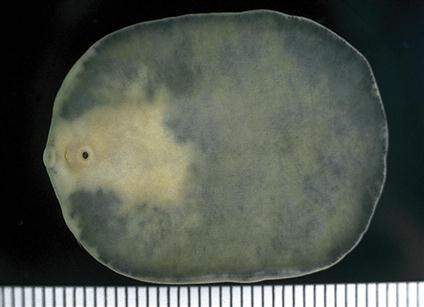The Phylum Platyhelminthes, Class Trematoda
Learning Objectives
After studying this chapter, the reader should be able to do the following:
• Identify the external and internal morphologic features of the digenetic fluke.
• Identify the developmental stages in the life cycle of a typical digenetic fluke.
• Compare and contrast monogenetic trematodes and digenetic trematodes.
Key Terms
Monogenetic fluke
Digenetic fluke
Oral sucker
Ventral sucker (acetabulum)
Hermaphrodism
Operculated egg
Miracidium
Sporocyst
Redia
Cercaria
Metacercaria
Adult fluke
The phylum Platyhelminthes, the flatworms, includes two of the strangest classes in the animal kingdom, the trematodes (or flukes) and the cestodes (or tapeworms). The morphologic feature common to these two classes is that the worms are dorsoventrally flattened.
Members of the phylum Platyhelminthes, class Trematoda, are often referred to as trematodes or “flukes.” Their bodies are often flattened, unsegmented, and leaflike. An example of a typical fluke is Fasciola hepatica (Figure 7-1). Within this class are two subclasses, the subclass Monogenea (the monogenetic trematodes) and the class Digenea (the digenetic trematodes). Monogenetic trematodes usually parasitize fish, amphibians, and reptiles, whereas digenetic trematodes are usually associated with wild and domestic animals and humans.

Subclass Monogenea
Monogenetic trematodes are usually ectoparasites of fish, amphibians, and reptiles. They attach to the exterior surfaces, such as gills, skin, fins, and the mouth. These trematodes attach to the host with a posterior adhesive organ that may have suckers, hooks, or clamps (Figure 7-2). These parasites are usually diagnosed in veterinary practices that specialize in treating saltwater or freshwater aquarium fish or in aquacultural environments (e.g., fish farming). Because monogenetic trematodes are diagnosed so infrequently in veterinary practice, the emphasis in this chapter (and the text) is on the digenetic trematodes.
Subclass Digenea
Digenetic trematodes, or flukes, are usually endoparasites of both domestic and wild animals and occasionally humans. Digenetic flukes are generally broad, leaf-shaped, and flattened, although a few, such as Fascioloides magna, are thick and fleshy (Figure 7-3). One group of trematodes (the schistosomes) are long, thin, and wormlike, resembling the nematodes or roundworms.

Key Morphologic Features
Figure 7-4 details the internal morphology of a representative digenetic fluke. On or near the anterior end is the fluke’s mouth, which is surrounded by a muscular oral sucker. This mouth connects to a muscular pharynx, which in turn leads to an esophagus, which bifurcates into two blind ceca. Flukes do not possess an anus; to release digested food, they regurgitate their cecal contents back into the tissues or organs they infect. These contents are often observed in the tissues on histopathologic section and are colloquially referred to as “fluke puke.” Flukes also possess a muscular organ of attachment called an acetabulum, or ventral sucker. This organ is used as a “holdfast organ” and is not associated with feeding.
Stay updated, free articles. Join our Telegram channel

Full access? Get Clinical Tree



